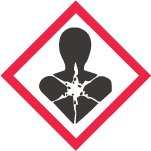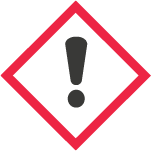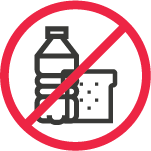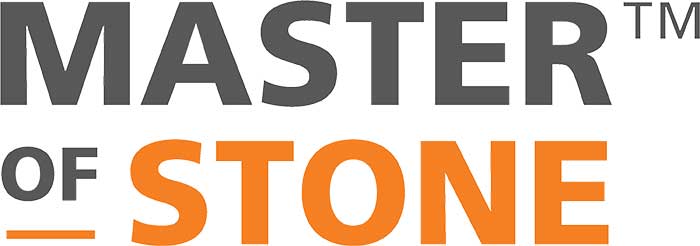The finished Caesarstone® is an inert, stable product that does not release hazardous materials in its fully intact form. However, dust derived from Fabrication Processes* contain respirable crystalline silica (SiO2). Hence, workers involved in Fabricating Processes, whether at the fabrication workshop or upon installing and removing/demolishing Caesarstone® slabs are at risk for significant respirable crystalline silica exposure. During the Fabricating Process, it is necessary to consider the following information.
* “Fabrication Process/es” or “Fabricating” or “Fabrication” means cutting, grinding, chipping, sanding, drilling, polishing, etc. manufacturing processes, including during installation or removal of the product.
In this SDS Caesarstone® slabs are referred to also as “products”.
PLEASE READ CAREFULLY
The following relates to the formation of dust, e.g., during Fabrication Processes.
DANGER!


 Category 1A (Carcinogenicity) (H350, H372)
Category 1A (Carcinogenicity) (H350, H372)

Category 3 (Respiratory tract irritation) (H335)
HAZARD STATEMENTS:1
(H350) May cause CANCER (inhalation)
(H372) Causes damage to lungs through prolonged or repeated exposure (inhalation)
(H335) May cause respiratory tract irritation



PREVENTION:1
P202 Do not handle until all safety precautions have been read and understood.
P260+P261 Do not breathe dust generated during the Fabrication, installation and/or removing/demolishing processes.
P264 Wash face and hands thoroughly after handling and fabricating.
P270 Do not eat, drink or smoke when using this product.
P284 Wear respiratory protection for particles (P3/N95 or higher).
Refer to Section 7 for Handling and Storage and to Section 8 for dust Exposure Controls.


FIRST AID MEASURES:1 P314 Get medical advice/attention if you feel unwell.
DISPOSAL:1 P501 Dispose of remains in accordance with local regulations.
REGULATION (EC) No 1272/2008.
Potential Health Effects
Inhalation: Do not breathe dust.
Workers who inhale very small crystalline silica particles are at risk for silicosis – an incurable, progressively disabling and sometimes fatal lung disease. Silicosis results in permanent lung damage. Silica dust particles become trapped in lung tissue, causing inflammation and scarring and reducing the lungs’ ability to take in oxygen. Symptoms of silicosis can include shortness of breath, cough and fatigue, and may or may not be obviously attributable to silica. According to the USA OSHA alert of Feb 2015, workers exposed to airborne crystalline silica also are at increased risk for lung cancer, chronic obstructive pulmonary disease (COPD) and kidney disease, and according to certain medical schools of thought, such workers are also at increased risk for auto-immune diseases (for example rheumatoid arthritis).
Skin and Eye Contact: Mineral dust may produce transitory mechanical irritation to skin and eyes.
Aggravation of Pre-existing Conditions: Persons with impaired respiratory function and chronic respiratory disorders may be more susceptible to the effects of this substance and may be adversely affected by any airborne particulate matter exposure. Smoking can increase the risk of lung injury. Inhalation may increase the progression of tuberculosis. Persons with preexisting skin disorders may be more susceptible to the effects of this material.














